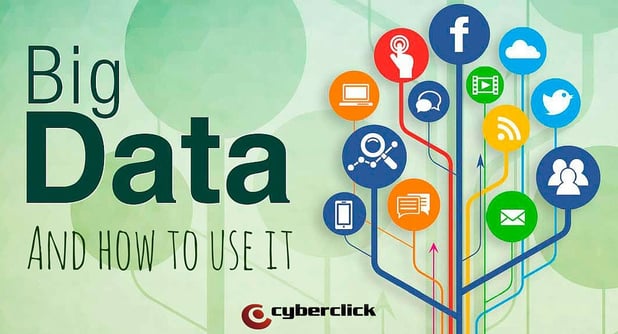By Kaelan O'neill, on 30 June 2016
We hear this term everywhere, and we know that it is important, but what exactly is big data, and why is it relevant to your business’s marketing success? The first thing people think of when they hear big data typically is that it’s huge- ginormous- and scary, intimidating, even. While it is true that big data is extremely big, hence the name, it’s something that can be funneled down and channeled in a controlled way to truly help your company succeed by providing business insights into your target market and, therefore, value to your marketing efforts.

So now, what is big data? Although there are many definitions floating around on the internet, essentially big data is both the large volume of structured, and unstructured, data acquired by and inundating business on a daily basis. This collection of data from not only digital sources, but traditional sources as well, from both inside and outside the business, is an expansive source of information that allows for continuous analysis and discovery. The important thing to remember is that is not the amount of data accrued, but what you actually do with that said data. This data can be analyzed for insights in order to make strategic business decisions and better, more effective, business moves.
The sources for big data, for the most part, come from three sources:
- Those that are publically available- typically open data sources like government websites such as the European Union Open Data Portal
- Data that is streamed- including data coming into your IT system via a web of devices that are connected
- Social media data- Social interactions such as Twitter and Facebook, and their accompanying data, can be either structured or unstructured, which makes for a bit of complicated analysis, but is one of the most relevant sources of information regarding marketing
The most important thing to remember about big data is that the primary value doesn’t come from the raw data itself, but from the processing and analysis of it, and its proceeding insights, that lead to relevant choices about products and services. When big data is analyzed effectively, you can accomplish specific business tasks including answers to how to reduce costs, how to effectively use time and reduce unproductive time spent, what new products to develop, what are the best offers to create and how to best optimize them, and, above all, what are the smartest decisions to make. Additionally, with big data you are able to determine the root issue of business failures, almost at the exact real-time that they happen.
Big data is used everywhere, and by nearly every business, in all types of industries- from banking to healthcare, retail to education, big data is important for anyone who uses marketing strategies. One example of how big data helped lead to cost savings is with the American delivery company, UPS. Most of the data for UPS comes from sensors located in the delivery vehicles that monitor daily performance of the drivers. Relying heavily on map data available online, the data from these sensors lead to a huge redesign of the route structures of the UPS drivers, by using this map data to reconfigure and restructure a driver’s real-time pickup and drop-off deliveries. In doing so, this use of data led to shaving off 85 million miles from daily routes, resulting in more that 8.4 million gallons of fuel being saved. According to UPS estimates, by eliminating just one daily mile per driver, the company saves $30 million, so overall; the company dollar savings are incredibly significant.
Through the use of big data in real time, Chicago-based company, Morton’s Steakhouse, was able to significantly increase their brand recognition. A customer tweeted jokingly to the steakhouse a request to have dinner sent to him at the Newark airport in New Jersey, where his flight would be arriving late in the evening after a long day at work. The steakhouse saw the tweet, realized that he was not only a frequent tweeter, but a frequent customer, and responded immediately with an incredibly successful publicity stunt- they pulled data on what he typically ordered, found out which flight he was on, and then sent a tuxedo-wearing deliverer to serve him dinner upon his arrival. By utilizing big data in real time, Morton’s Steakhouse was able to significantly increase their customer base by one exaggerated publicity stunt.
Related Article: What You Need To Know About the Future of Social Marketing
Not all uses of big data need to be so elaborate, but by simply utilizing and analyzing the gigantic mass of information available, companies and marketers alike can find extremely useful, relevant, and helpful insight into how to improve their businesses and make better, smarter decisions while reducing costs and time. Take public transportation, for example- by using available social media and applications, cities can optimize traffic flows based on social media and weather data as well as real time information. As a result, transport infrastructure in major cities has greatly improved, and traffic volumes and traffic jams, as well as public transportation wait times, have all significantly decreased- simply by analyzing the data information stream. Big data seems scary, but in reality your business can only improve by using it!

